After the Communists Have Gone
Ukrainian photographer Mila Teshaieva captures three Asian countries now adrift in a haunting exhibition at Haggerty Museum.

Mila Teshaieva, Ukrainian, b. 1974, Koshkar Ata, 2012 Archival pigment print. Print size 29.5 x 42.5 in. Courtesy of the artist
It looks like a ghostly-white, abandoned city, with various onion-domed and yurt shapes, some just outer shells, all set in a pale, dusty-looking space under a gray cloudless sky.
In fact, this is a Muslim cemetery in Asia, whose building-like structures take on the appearance of a fabled lost city, in a haunting photo by Ukrainian photographer Mila Teshaieva. This image captures the contrast between the permanence of this traditional cemetery and the nomadic life led by the people who are buried there. But more broadly, Teshaieva’s selected images of scenes in Kazakhstan, Turkmenistan and Azerbijian capture the changing sense of place and identity in these three countries bordering the Caspian Sea. An exhibition of her photos, at Marquette University’s Haggerty Musuem of Art through May 31, is well worth your time.
This is the first American showing of Teshaieva’s work, and this work is part of a four-year project she undertook to document the changes in three countries struggling to reinvent their culture after the collapse of the old Communist Soviet Union. People in these countries were used to the infrastructure provided by the Communists. Everything was predictable, proscribed and regimented. “The Soviet Union was built on pride. Pride goaded people to sacrifice themselves for the sake of an idea,” the exhibition monograph written by Teshaieva and Christoph Moeskes notes.
One photograph shows a woman sitting in a dark office. “She arrives for work at 8 AM, opens her office and sits at the desk,” the monograph notes. “She checks some dusty papers and looks out the window. She was the senior manager in this factory that has been sinking into ruins for 20 years. ‘Someday it will start up again,’ she says. ‘Until then someone has to keep papers in order.’” Teshaieva says she had a difficult time convincing the woman to let her photograph in case a permit was required, even though there was no one left at the factory to issue a permit.
Teshaieva’s photographs capture an emptiness that is somehow serene, a sense of people just waiting for development to occur, which creates a sense of tension. She began to see that the collapse of Communism and new era of capitalism wasn’t a clear-cut improvement, and had thrown a lot of the inhabitants into a tailspin of lost identity and floundering around for a new culture to replace the old traditions. As a result, many people started to approach life in the old Communist model.
Teshaieva’s stark, lovely images often capture crumbling interiors with a lone person, photographed from enough distance to contextualize him or her in a particular place. Many of the outdoor scenes are especially empty and vacant. When I asked her if this how it looked everywhere she went, she said “no,” that’s what she chose to show. Even a photograph with a large city in the background provides enough distance to rob it of any vibrancy.
The photographs of interiors have that sterile, Communist look. In one office a business man stands in front of a large, tropical mural, a suggestion of a better, more beautiful place somewhere abroad. “That’s from after the fall of the Soviet Union,” the monograph notes. “An image like that would not have been allowed (under the old regime).” Today, some of these countries’ leaders want to build resorts to draw tourists. But not much has been done to accomplish this. More waiting.

Mila Teshaieva, Ukrainian, b. 1974, Untitled (Quba), 2011 Archival Pigment Print. Print size 20 x 27.5 in. Courtesy of the artist
One photograph shows a pile of discarded books, reminiscent of the bonfire of the vanities. The governments in all three countries decided to change the alphabet from Cyrillic to Latin-based (to distance the the newly independent countries from Russia and assert their pan-Turkish identity) so all these books are no longer to be used or read. When Teshaieva was being driven around the area, the cab driver had to ask her what the signs said as he could no longer read them! The words were the same, but in a new alphabet.
Teshaieva’s work has been described as “political theater,” and it does have a very theatrical quality. Teshaieva asked the people she met to pose themselves. The subjects aren’t manipulated by the artist, but still, the posing creates a particular dynamic between photographer and subjects and between the photos and the viewer. The setting the subjects choose becomes very much a part of the conversation. A particularly poignant image was of an aesthetician in a spa. Her job had been giving people mud baths from the mud around the Caspian sea. She stands waiting for a costumer with her dwindling mud supply spread out on a sheet before her.
Another photograph shows a funny yet strange monument — a “wishing triangle” which the president of Kazakhstan placed in a towering urban building. In the middle of one of these rooms — with a sweeping view of the city — is a pedestal at waist height with a golden triangle and a hand imprint. Visitors can come and place their own hand on the imprint and then make a wish, as they look at at the city. The president has promised their wish will then come true. It’s now become a very popular thing for people to do.
Such is this exhibition’s view of these countries, all waiting, hoping, wishing, imagining a new future that will arrive some day. In one arresting photo, we see the back of a man holding a group of colored balloons on a string, while standing at the edge of the Caspian Sea, looking toward the water and sky that has melded into a hazy gray horizon of the purest ambiguity. The exhibition is called “Promising Waters,” but exactly what is promised looks anything but clear.
“Promising Waters,” through May 31, Haggerty Museum of Art, Marquette University campus.
Promising Waters Gallery
Art
-
Exhibit Tells Story of Vietnam War Resistors in the Military
 Mar 29th, 2024 by Bill Christofferson
Mar 29th, 2024 by Bill Christofferson
-
See Art Museum’s New Exhibit, ‘Portrait of the Collector’
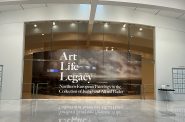 Sep 28th, 2023 by Sophie Bolich
Sep 28th, 2023 by Sophie Bolich
-
100 Years Of Memorable Photography
 Sep 18th, 2023 by Rose Balistreri
Sep 18th, 2023 by Rose Balistreri
Review
-
‘L’Appartement’ Is a Mind-Bending Comedy
 Mar 25th, 2024 by Dominique Paul Noth
Mar 25th, 2024 by Dominique Paul Noth
-
Highlands Café Is Easy to Love
 Mar 15th, 2024 by Cari Taylor-Carlson
Mar 15th, 2024 by Cari Taylor-Carlson
-
‘The Mountaintop’ Offers Very Human Martin Luther King Jr.
 Mar 11th, 2024 by Dominique Paul Noth
Mar 11th, 2024 by Dominique Paul Noth

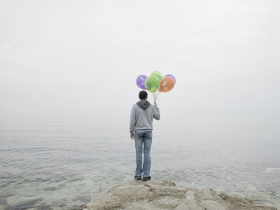

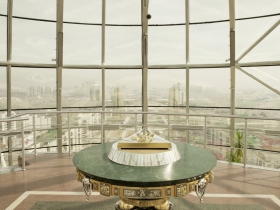
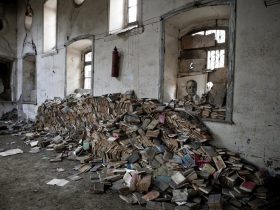
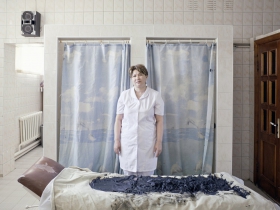















Thanks, Rose. I can’t wait to see this!
I think your closing with the title, Rose, is wonderful. Promising Waters is evocative of
a beautiful and natural force of energy, perhaps a foreshadowing? Thank you.
Thank you, Rose, for this review – since I myself am Ukrainian I have a special interest in this exhibition!
Rose, thank you so much for such a deep, thoughtful review!